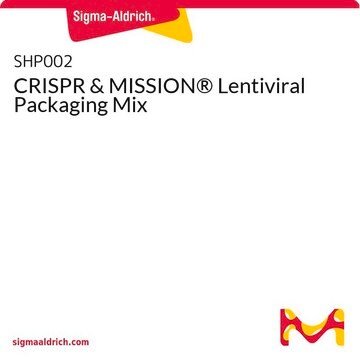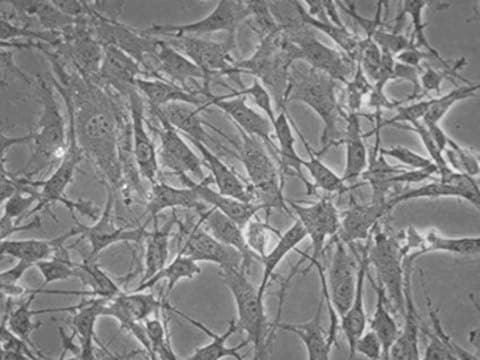SCC495
Mouse OP9-DL4 Notch Ligand Cell Line (-GFP)

Synonyme(s) :
DL4 cell line, Delta-like 4 cell line, Notch ligand cell line, OP9-DL4, OP9-DL4 cell line
About This Item
Produits recommandés
Source biologique
mouse
Niveau de qualité
Conditionnement
vial of ≥1X10⁶ cells/vial vial
Fabricant/nom de marque
Millipore
Technique(s)
cell culture | mammalian: suitable
Conditions d'expédition
liquid nitrogen
Température de stockage
−196°C
Application
- Each vial contains > 1X106 viable cells.
- Cells are tested negative for infectious diseases by a Mouse Essential CLEAR Panel by Charles River Animal Diagnostic Services.
- Cells are verified to be of mouse origin and negative for interspecies contamination from human, rat, Chinese hamster, Golden Syrian hamster, and nonhuman primate (NHP) as assessed by a Contamination Clear panel by Charles River Animal Diagnostic Services
- Cells are negative for mycoplasma contamination.
Caractéristiques et avantages
Description de la cible
Notch signaling controls multiple cell-fate decisions. Four Notch receptors (Notch 1- Notch 4) have been identified in mammals. These receptors interact with Jagged or Delta-like (DL) family members of Notch ligands. This is followed by cleavage of the intracellular domain of Notch and its subsequent translocation into the nucleus, where it binds with transcription factors and activates transcription of various downstream target genes. Notch signaling is essential in early T- cell lineage commitments. Bone marrow progenitor cells expressing constitutively-active Notch develop into CD4 and CD8 double positive T cells rather than B cells. They also play an important role in development of CD4+ and CD8+ single positive cells from double positive precursor thymocytes, in addition to development of T-cells with αα+ TCRs. Of the 4 Notch receptors, Notch1 (N1) receptor signaling has been shown to be sufficient for T cell development. The delta like ligands are physiologically relevant N1 ligands. DL1 interacts with both N1 and Notch 2 (N2) to induce T- cell lineage commitment. However, DL4 interacts specifically only with N1 and supports T cell commitment and maturation both in vitro and in vivo. Moreover, results from previous binding studies show that binding between DL1 and N1 is weak as opposed to the stronger binding between DL4 and N1. Of the DL1 and DL4 delta like ligands, DL4 exhibits greater capacity to activate the Notch pathway in hematopoietic progenitor cells.
SCC495 OP9-DL4 Cell line has had the GFP coding region removed from the original pMiGR plasmid, resulting in no GFP expression for this cell line.
Source
OP9-DL4 cells were genetically modified from OP9 stromal cells derived from mouse bone marrow.
References
1. Immunity 2002, 17(6): 749-756.
2. J Orthop Sci. 2005, 10(6): 589-594.
3. Curr Opin Immunol. 2007, 19(2): 163-168.
4. Cold Spring Harb Protoc. 2009, 2009(2): pdb.prot5156.
Stockage et stabilité
Autres remarques
Clause de non-responsabilité
Code de la classe de stockage
10 - Combustible liquids
Classe de danger pour l'eau (WGK)
WGK 3
Point d'éclair (°F)
Not applicable
Point d'éclair (°C)
Not applicable
Certificats d'analyse (COA)
Recherchez un Certificats d'analyse (COA) en saisissant le numéro de lot du produit. Les numéros de lot figurent sur l'étiquette du produit après les mots "Lot" ou "Batch".
Déjà en possession de ce produit ?
Retrouvez la documentation relative aux produits que vous avez récemment achetés dans la Bibliothèque de documents.
Notre équipe de scientifiques dispose d'une expérience dans tous les secteurs de la recherche, notamment en sciences de la vie, science des matériaux, synthèse chimique, chromatographie, analyse et dans de nombreux autres domaines..
Contacter notre Service technique








